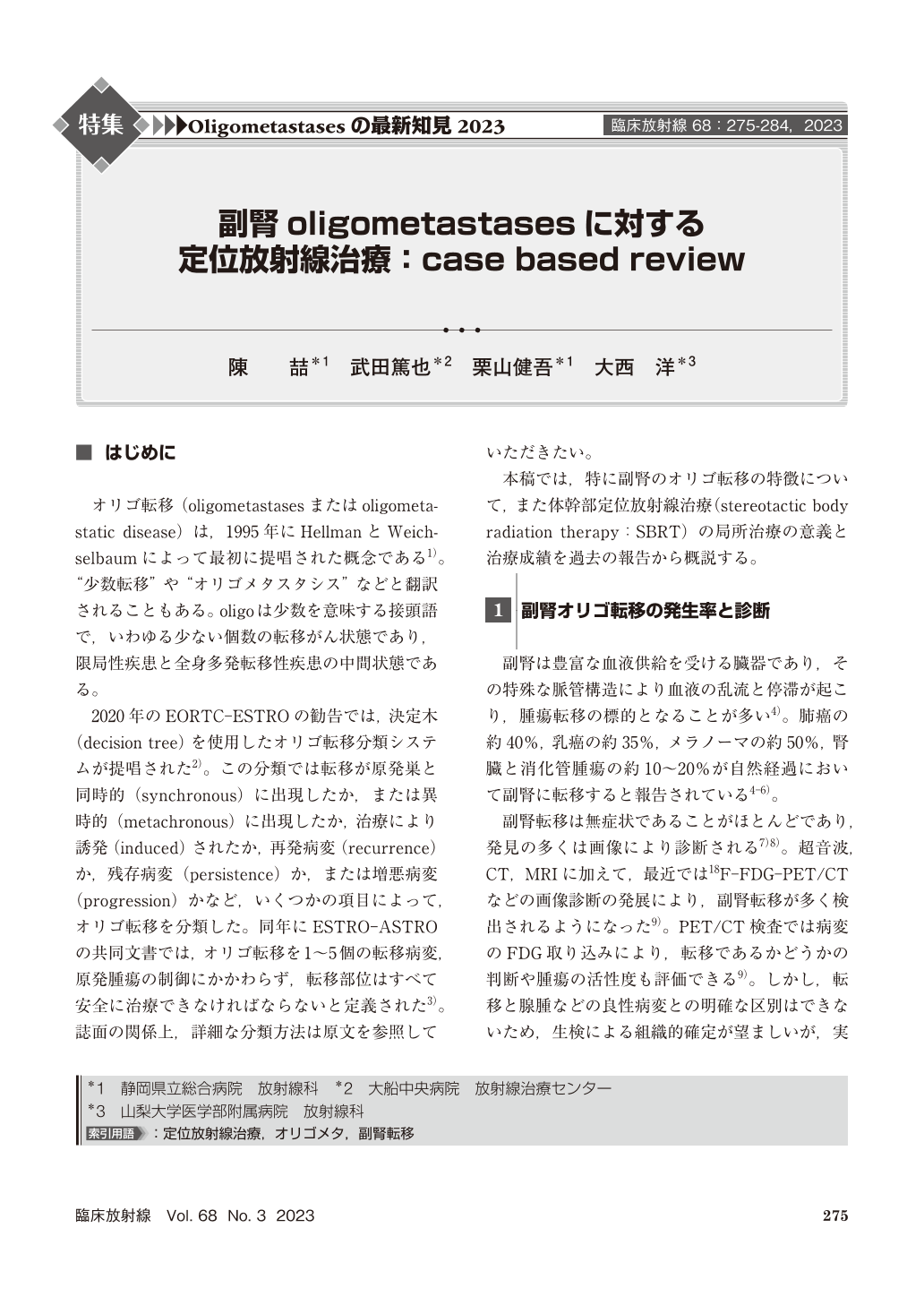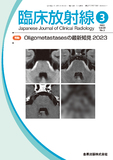Japanese
English
- 有料閲覧
- Abstract 文献概要
- 1ページ目 Look Inside
- 参考文献 Reference
オリゴ転移(oligometastasesまたはoligometastatic disease)は,1995年にHellmanとWeichselbaumによって最初に提唱された概念である1)。“少数転移” や “オリゴメタスタシス” などと翻訳されることもある。oligoは少数を意味する接頭語で,いわゆる少ない個数の転移がん状態であり,限局性疾患と全身多発転移性疾患の中間状態である。
Oligometastatic disease(OMD)is a distinct clinical entity that lies between localized recurrence and disseminated disease. The OMD was first described by Hellman and Weichselbaum in 1995. The definition of OMD has been varied across studies in the past decades;however, a uniform classification system of OMD has been proposed by the European Organization for the Research and Treatment of Cancer and the European Society for Radiotherapy and Oncology(ESTRO)in 2020. Subsequently, an ESTRO-American Society for Radiation Oncology consensus document defined the OMD as having the following characteristics:1-5 metastatic lesions present, a controlled primary tumor being optional, and all metastatic sites to be safely treatable. Several studies have focused on stereotactic body radiation therapy(SBRT)in adrenal OMD. Patients with adrenal OMD are candidates for curative-intent management, in which local ablative treatment, such as SBRT, should be instituted to improve clinical outcomes. Additionally, the development of personalized therapies for individual patients with adrenal OMD aimed to improve their quality of life and overall survival should be addressed. Here, we review the characteristics of adrenal OMD, and the significance and outcome of local treatment with SBRT based on two relevant cases.

Copyright © 2023, KANEHARA SHUPPAN Co.LTD. All rights reserved.


